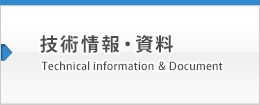真菌株編
よくある質問(FAQ):真菌株編
- 真菌株や酵母株を水和するためにはどうしたらよいですか?
- 菌株の成育が停止した後、再び成育を促すためにはどうしたらよいですか?
- YM Agar(ATCC Medium 200)の培地組成を教えてください。
- 菌株の凍結保存はどのように行ったらよいですか?
- ATCCのMycology株、及びBotany株をATCCへ寄託するためにはどうしたらよいですか?
|
Q
真菌株や酵母株を水和するためにはどうしたらよいですか? A
酵母やカビは、バクテリアのように液体培地へ直接播種して膨潤されることを嫌います。凍結乾燥状態の酵母やカビを起眠する適切な方法とは、滅菌水を加えて膨潤させることです。ATCCでは、パスツールピペットで、バッチバイアル(内側と外側のある二重バイアルの類です)もしくは血清バイアル(金属製キャップのバイアルです)の中に約0.3ml容量の水を入れて膨潤しています。その後、ピペットで全量を吸い上げ、5mlの滅菌水を含む試験管に移し入れています。 |
Q
What is the best way to rehydrate fungi and yeasts? A
Yeasts and other fungi don't like being revived from a lyophilized condition directly into broth the way that bacteria do. The proper way to recover yeasts and other fungi from a lyophilized condition is to add sterile distilled water. We use a Pasteur pipette to add approximately 0.3 ml water to the inner vial of a batch vial (that's the kind with inner and outer glass vials) or to a serum vial (the kind with a metal cap). Then we draw up the entire contents into the pipette and transfer to a test tube with about 5 ml sterile water . |
|
|
|
||
|
Q
菌株の成育が停止した後、再び成育を促すためにはどうしたらよいですか? A
培地、光、年齢、継代数などの様々な要素が胞子形成能に影響を与えています。これまでに胞子形成が認められていた多くの株において、年齢や継代の影響により胞子形成能が失われています。この現象は、特に糸状不完全菌類の暗色線菌科(dematiaceous hyphomycetes)である、Alternaria, Helminthosporium, Drechslera, Curvularia などで示されています。これらの株の胞子形成能は紫外線に近い黒色光の下で12時間光をあて、12時間光を消す、というサイクルを繰り返して培養することで回復します。新しく調整した株であれば胞子産生には最適ですが、可能であれば胞子は凍結乾燥、もしくは液体窒素条件下で数週間もしくはそれ以上保存しておくようにしてください。 |
Q
How can fungal cultures be encouraged to sporulate again after they have stopped? A
Many factors affect a culture's ability to sporulate, including medium, light, age and number of transfers. With age and/or transferring, many formerly sporulating cultures simply stop producing spores. This is especially true of many of the dematiaceous hyphomycetes such as Alternaria, Helminthosporium, Drechslera, and Curvularia. Sporulation of these cultures can be aided by growing the cultures under a black light (near UV) that alternates with a 12-hours-on and 12-hours-off cycle. Freshly isolated material is best for spore production, but to keep spores for several weeks or longer, freeze-drying or liquid nitrogen storage is recommended. |
|
|
|
||
|
Q
YM Agar(ATCC Medium 200)の培地組成を教えてください。 A
malt extract (3 mg), yeast extract (3 mg), glucose (10 g), peptone (5 g), agar (15 g)を加え、YM寒天培地1Lを調整してください。 |
Q
What is the formulation for YM Agar (ATCC Medium 200)? A
One liter of YM Agar contains malt extract (3 mg), yeast extract (3 mg), glucose (10 g), peptone (5 g), and agar (15 g). |
|
|
|
||
|
Q
菌株の凍結保存はどのように行ったらよいですか? A
ATCCでは、凍結されたカビ培養液は液体窒素の気層中で保存していただくことを推奨いたします。もし液体窒素がなければ、-70℃で1週間以内の保存は可能です。-20℃では絶対に保存しないでください。 |
Q
How should I store frozen fungal cultures from ATCC? A
We recommend that frozen fungal cultures be stored in the vapor phase of liquid nitrogen. If liquid nitrogen storage is not available, vials may be stored at -70oC for no longer than one week. Do not store cultures at -20oC. |
|
|
|
||
|
Q
ATCCのMycology株、及びBotany株をATCCへ寄託するためにはどうしたらよいですか? A
ご質問等は、ATCCウエブサイトのMake a Depositよりお問い合わせください。 |
Q
How do I deposit a strain into the Mycology and Botany? A
See our Make a Deposit to inquire about depositing materials at ATCC. |
|

 創薬支援サービスはこちら細胞・ヒト組織商材についてはこちらのページで紹介しております。
創薬支援サービスはこちら細胞・ヒト組織商材についてはこちらのページで紹介しております。 


